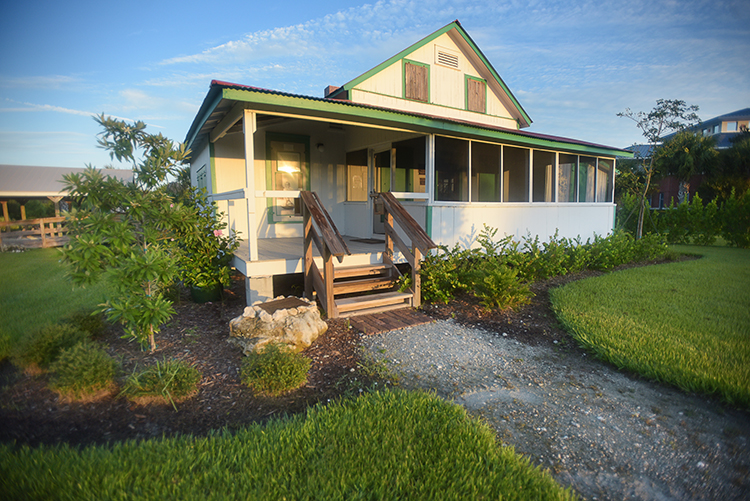
Two years after the Laura Riding Jackson house was moved from the Environmental Learning Center to the Vero campus of Indian River State College, the Laura Riding Jackson House Foundation and the school are enthusiastic about their partnership.
Despite disruptions caused by the pandemic, the house has settled in and become a lively and attractive part of the IRSC Mueller Campus near 66th Avenue and Route 60, providing a venue for literary events, college and high school student academic and volunteer opportunities, and al fresco dining.
Early on, the Foundation managed to make literary lemonade out of pandemic lemons with the first, and hopefully last, COVID-19 Writing Competitions, hosting a pair of writing and poetry contests in the spring and summer of 2020 “to unite the community during the COVID-19 lockdown.”
More than 300 entries were submitted from students, poets and other writers, all inspired by the effects of COVID-19.
In June and July this summer, with in-person events back on the schedule, the Foundation’s “Write in the Middle” creative writing summer camp for 6th-, 7th-, 8th- and 9th-graders was well attended, and additional indoor and outdoor learning opportunities for a variety of ages take place several times a week, including eight events in August.
Come November, says Foundation President Marie Stiefel, North Carolina’s Poet Laureate Cathy Smith Bowers will be Poet in Residence, conducting workshops for students and adults.
College Provost Casey Lunceford is delighted with the partnership’s “wonderful energy and synergy. We enjoy having the house on our campus.
“We’re looking forward to a robust fall, ramping up the partnership, continuing on the path we started two years ago. It’ll be the first chance we’ve had to expose the home and the gorgeous garden” to a full campus, Lunceford says.
With the new school year, says Lunceford, service opportunities will be offered not only for college students but also for students from the Charter High School “right next door,” who will learn about the rich history of the house and the life and work of the poet as they train to serve as docents and tour guides, activities for which they can earn college credit.
Lunceford is especially pleased that “several faculty members are already engaged” with the house and that “some of Ms. Jackson’s works are included in their curriculum.”
Foundation President Marie Stiefel shares Lunceford’s enthusiasm about the hands-on participation of the students. “It’s very exciting that Charter students are already earning volunteer hours working in our garden, weeding and planting,” she said, adding that students will begin giving guided tours of the house and grounds this fall.
The Foundation’s signature event – the annual Poetry and BBQ – will be back at the house in April with live music, great food and, of course, poetry, with notable poets presenting their work and running workshops.
Currently, the pole barn with its native plant garden is a favorite lunch spot for members of the public and employees of nearby businesses.
The modest 111-year-old cracker home was built by renowned poet and literary activist Laura Riding Jackson on citrus grove land west of the railroad tracks near the Wabasso Bridge.
There it stayed during her lifetime and after, up until 1994, when it was moved to the campus of the Environmental Learning Center to save it from demolition.
At ELC, it served successfully as a gathering place for readers, writers and literary enthusiasts of all ages, as the Foundation describes, “a place of literary legacy and history, and a center for education and personal growth through writing.”
After 25 years, though, the ELC’s multimillion-dollar expansion project required the 1-acre corner occupied by the little homestead and the Foundation was forced to find a new home.
Indian River State College jumped at the chance to secure the property for its Mueller Campus. “It’s ideal,” Lunceford said at the time. “We like the educational aspect. The west side of our campus is very open and natural. Accessibility is not a problem. We have the space, and we’d be glad to host [the historic house].”
Funds were raised and the house began a dramatic – and very slow – three-hour, 11.6-mile move to the campus. There, the fragile, partially deconstructed little house and its pole barn were carefully reassembled in a large field adjacent to the college’s Brackett library.



